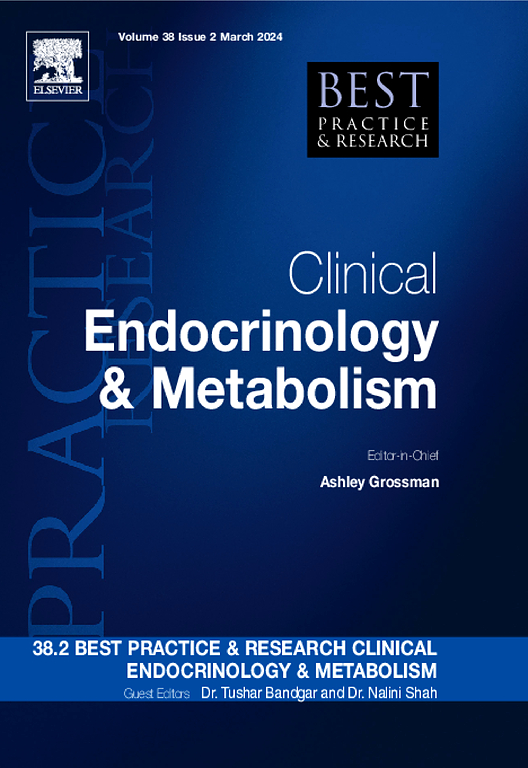青少年原发性甲状旁腺功能亢进。
IF 6.1
1区 医学
Q1 ENDOCRINOLOGY & METABOLISM
Best practice & research. Clinical endocrinology & metabolism
Pub Date : 2025-03-01
DOI:10.1016/j.beem.2025.101975
引用次数: 0
摘要
青少年原发性甲状旁腺功能亢进(PHPT)是一种罕见的内分泌疾病,与成人不同。本文综述了其独特的方面,重点是临床表现,遗传病因,基因型-表型相关性和治疗管理。青少年PHPT通常具有遗传基础,无论是家族性、综合征性还是明显的散发性,确定潜在的遗传原因对患者护理很重要。在世界范围内,临床表现以症状为主。这个年龄组的独特表现包括佝偻病、身材矮小和股骨骨骺滑动。基因型特异性差异在青少年PHPT特征中是明显的。诊断评估需要仔细解释生化和双能x线吸收测量结果,使用年龄和性别特定的参考范围,并有针对性地筛查综合征相关肿瘤。手术仍然是治疗的基石。目前在其管理方面的知识差距包括多发性内分泌肿瘤1型相关PHPT的治疗方案、非手术选择的有效性和安全性以及术后长期预后。本文章由计算机程序翻译,如有差异,请以英文原文为准。
Adolescent primary hyperparathyroidism
Adolescent primary hyperparathyroidism (PHPT) is a rare endocrine disorder bearing distinctions from the adult form. This review examines its unique aspects, focusing on clinical presentation, genetic etiologies, genotype-phenotype correlations, and therapeutic management. Adolescent PHPT often has a genetic basis, whether familial, syndromic, or apparently sporadic, and identifying the underlying genetic cause is important for patient care. The clinical presentation is predominantly symptomatic worldwide. Unique manifestations in this age group include rickets, short stature, and slipped capital femoral epiphysis. Genotype-specific differences are evident in the adolescent PHPT characteristics. Diagnostic evaluation requires careful interpretation of biochemical and dual-energy X-ray absorptiometry findings using age and gender-specific reference ranges, with targeted screening for syndrome-associated neoplasms. Surgery remains the cornerstone of management. Current knowledge gaps in their management include treatment protocols for multiple endocrine neoplasia type 1-associated PHPT, the efficacy and safety of nonsurgical options, and long-term post-surgical outcomes.
求助全文
通过发布文献求助,成功后即可免费获取论文全文。
去求助
来源期刊
CiteScore
11.90
自引率
0.00%
发文量
77
审稿时长
6-12 weeks
期刊介绍:
Best Practice & Research Clinical Endocrinology & Metabolism is a serial publication that integrates the latest original research findings into evidence-based review articles. These articles aim to address key clinical issues related to diagnosis, treatment, and patient management.
Each issue adopts a problem-oriented approach, focusing on key questions and clearly outlining what is known while identifying areas for future research. Practical management strategies are described to facilitate application to individual patients. The series targets physicians in practice or training.

 求助内容:
求助内容: 应助结果提醒方式:
应助结果提醒方式:


